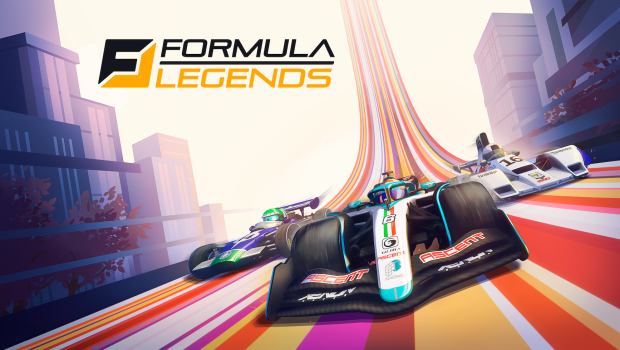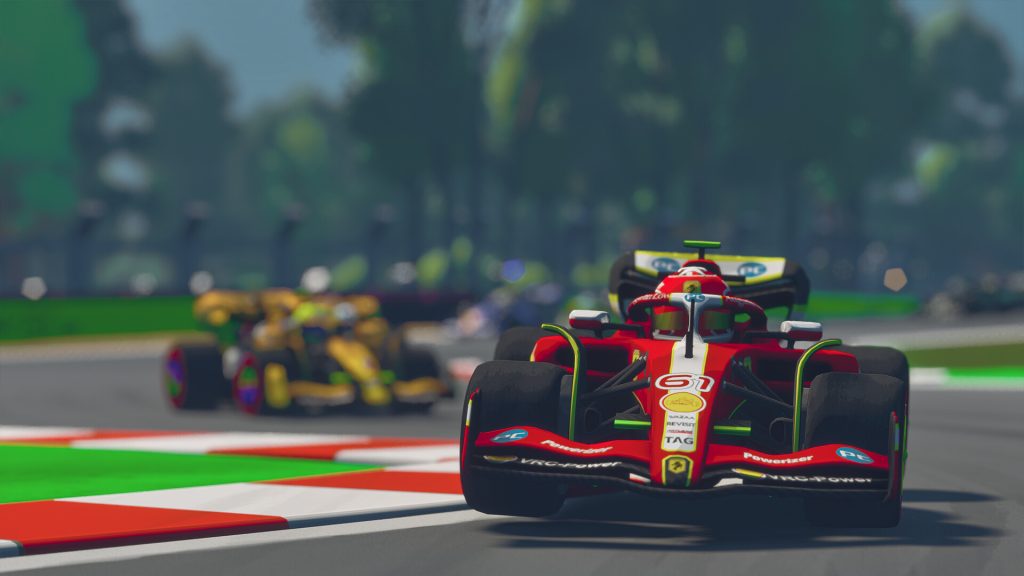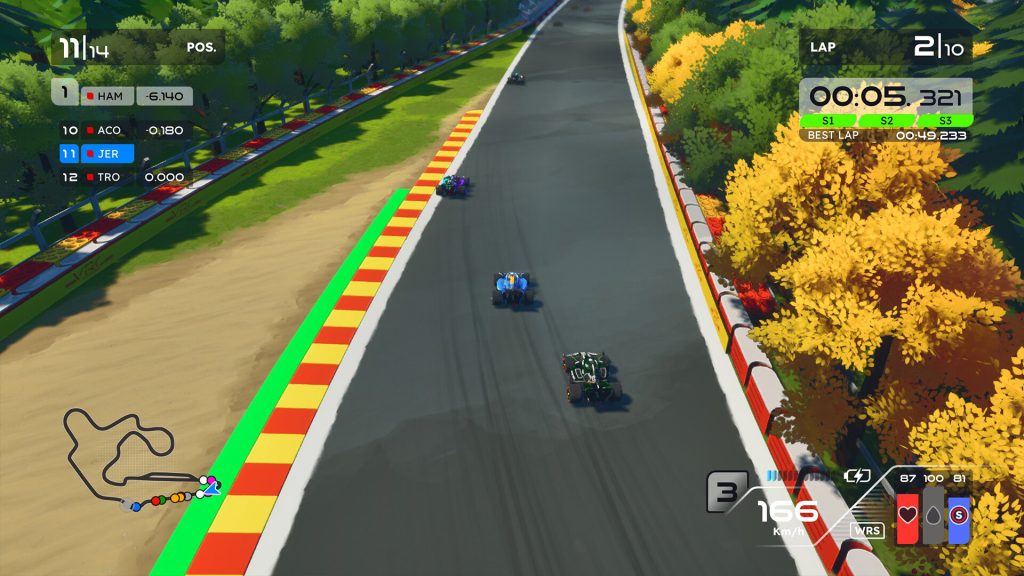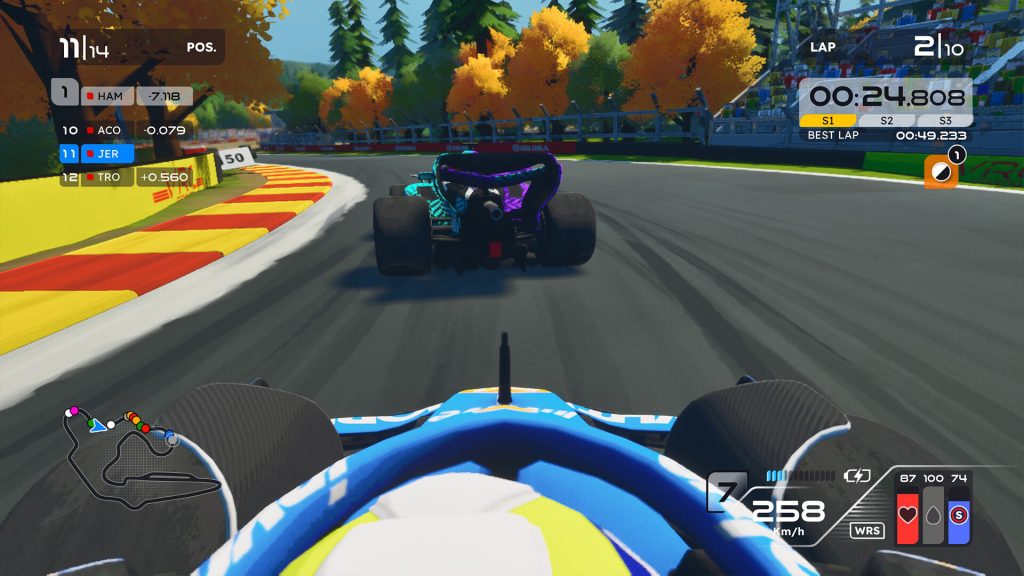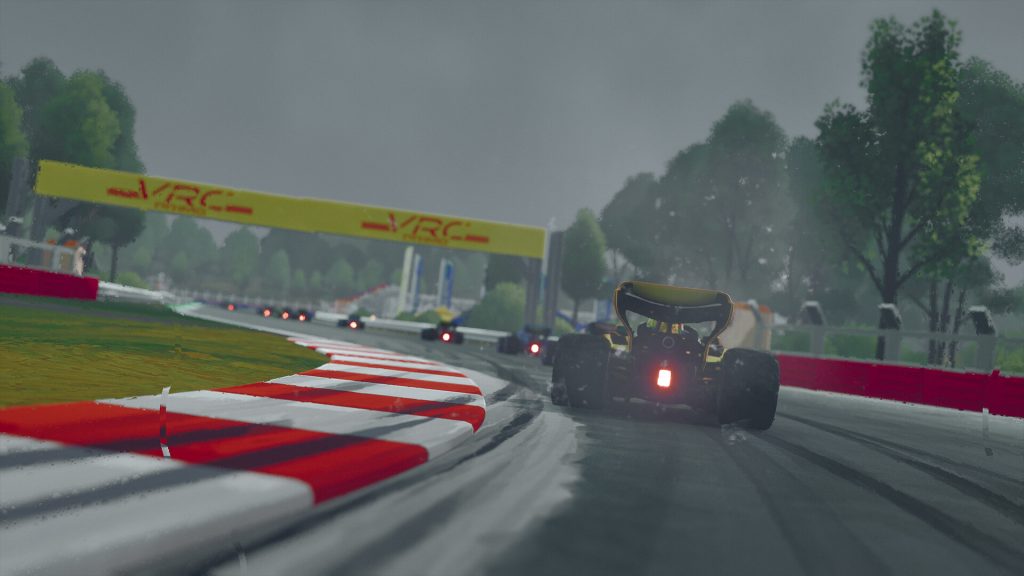Formula Legends PC Review
Summary: A good, if flawed, F1-themed arcade racer that's mired by a host of smaller issues.
3.6
Aside from a few franchises that stubbornly live on, the arcade racer is a bit of a dying breed. Of the ones that are released, fewer still focus on Formula One as a template for what they do.
Enter Formula Legends, developed by 3DClouds, the team behind Xenon Racer and most recently Transformers: Galactic Trials, is an arcade racing game that serves as a love letter to the pinnacle of open-wheel motorsport.
From the off, it’s obvious that 3DClouds has a lot of respect for the source material, featuring cars, teams, and drivers (legally distinct versions of them at least) from all the major eras of the sport from the 1960s, right through to the modern age. Each decade is split into categories that document the various changes to the cars, teams, and tracks.
Each of the dozens of teams and drivers is generally recognisable in relation to their real-life counterparts. There are a few that took me a moment to guess who the driver was supposed to be, or what team it was, but that was mainly when it came to the ’60s and ’70s, an era of Formula One I’m not so familiar with. Completing championships in any given era unlocks further new teams, drivers, tracks, and competitions to play.
This familiarity extends to the game’s 14 circuits, each of which is inspired by a real-life counterpart. Monza, Silverstone, Suzuka, Monaco, and Nurburgring are all represented, and while they’re not exact copies, most feature some iconic corner or trait that’s unique to that circuit. For example, the Belgium GP has what is undoubtedly an Eau Rouge and Raidillon complex at the start of the lap, just like real life, and the Japanese GP has its trademark figure 8 design with one part of the track under the other, etc.
Every track also has multiple variations that represent it throughout the years, because just as cars and drivers change over time, so do circuits. These typically fall into either Vintage, Classic, or Modern and offer up some nice variation in location, meaning that you won’t have driven all the game has to offer within an hour.
Races have several different lengths available, ranging from very quick to something closer to that of an actual F1 race. Tyres, fuel, and damage must be managed throughout, and pit stops are required to address any issues in these areas. Pitstops are fully interactable, too, something that I’ve not seen in a racing game in a long time. Pushing the face buttons attaches each wheel, and the left and right triggers are used to repair damage and fill the car with fuel.
All of this is presented in a colourful, exaggerated art style. Cars are chibi-esque, with squashed proportions. It’s reminiscent of ‘F1 Race Stars’ and its presentation, albeit with relatively realistic track design. The layouts themselves are okay for the most part, though there are some questionable design choices. One layout of the Italian GP has quite possibly the worst opening corners I have ever experienced in a racing game, for example, a sequence of short, back-to-back hairpin come chicanes that are just unpleasant to drive through and really don’t play into the game’s handling model.
Speaking of the handling model, it’s… weird. I wouldn’t go as far as to say that it’s bad, but it is strange. Vehicles have a very sluggish initial turn-in, which quickly speeds up, then, as you progress through the corner, slows down again. It’s almost as if there’s initially some understeer, which then turns into oversteer, before finally settling into understeer again. It gives all the cars a heavy and muted feel while driving, which is the exact opposite of how an F1 car should feel.
Now, this is an arcade game, so I didn’t expect a super realistic handling model and physics; I just wasn’t expecting this. What further adds to the odd qualities of the handling is that on corner exit, the car tends to rotate more and turn better when accelerating, which is the opposite of what you’d expect. It’s somewhat like how you can drive a go-kart with the throttle.
As I said before, none of this is bad, per se; it’s just odd. Perfectly playable, it just took a while to adjust to these new rules of the road.
The AI of Formula Legends is a bit of a let down. They don’t so much race the player or each other, so much as they time-trial their way around the circuits and will ram anyone or anything off the track if they so much as be slightly in their way. This is offset somewhat by the fact that I found the game to be incredibly easy. Except for a few tracks that seemed to be a spike in difficulty, I usually breezed to pole and then finished up to several laps ahead of the competition in almost every race.
None of these things is a deal breaker by any means; they’re just unfortunate nitpicks.
Steam Deck
Formula Legends works great on the Steam Deck. Maintaining a 60fps most of the time is easily done, and the controls all work as you’d expect. It’s a great way to play the game and, as such, will be living on my Steam Deck for quite a while.
Final Thoughts?
I enjoyed Formula Legends for the most part, despite all the little oddities and quirks. It’s a fun game that, with a little bit more work, could be great. The developers have announced that they’re working on fixes to various bugs that exist. This, along with mod support out of the box, should hopefully keep this game interesting for a while to come.


